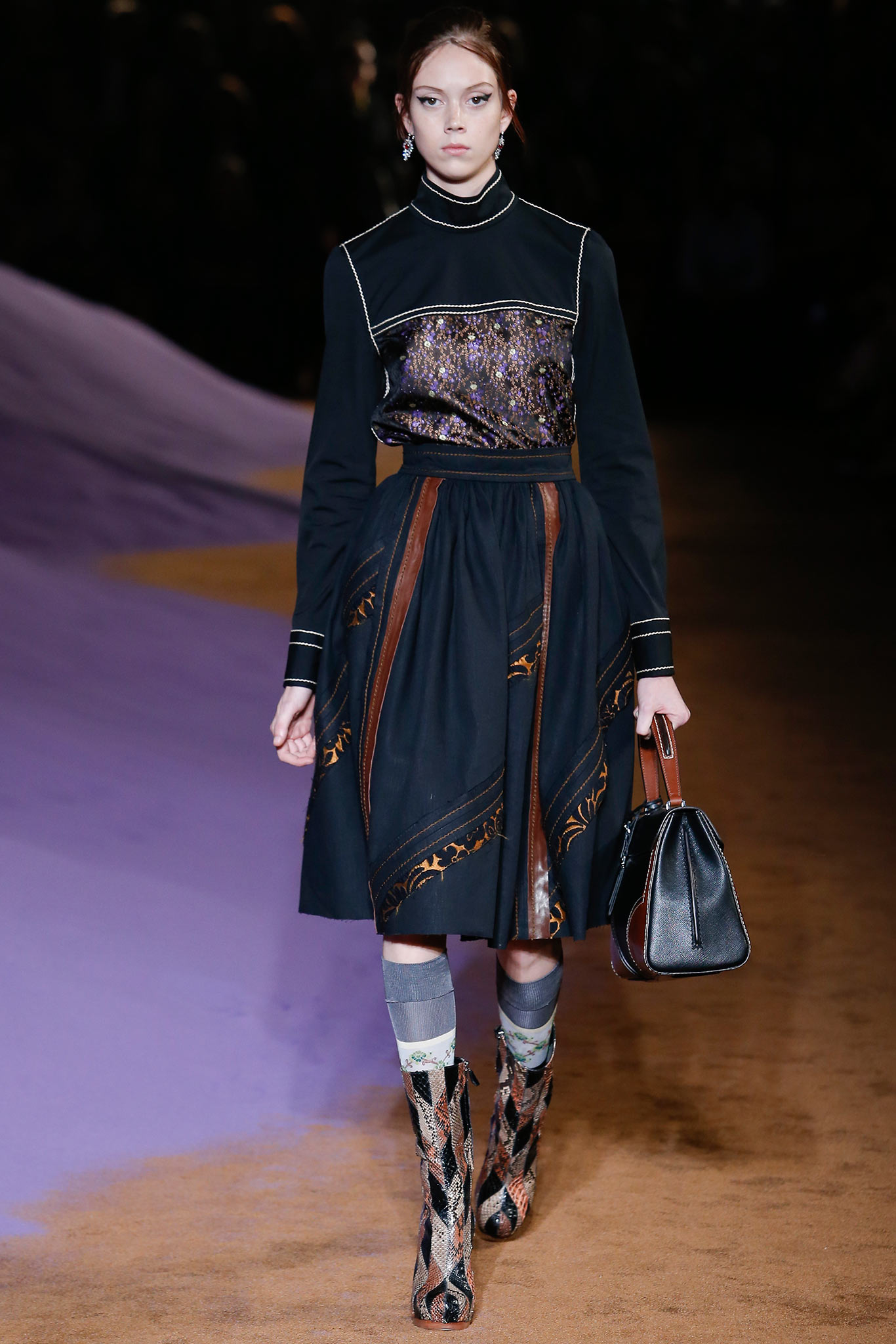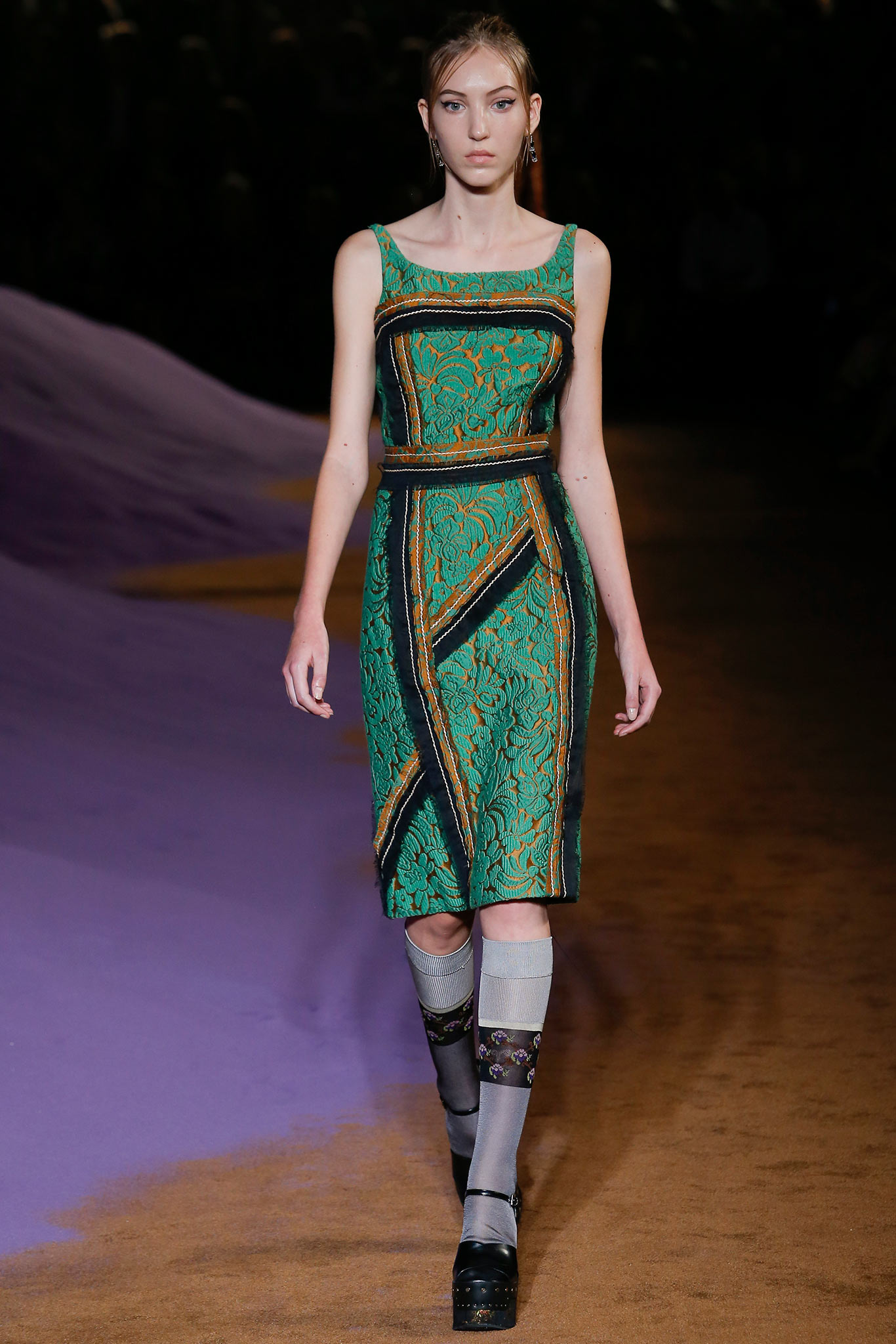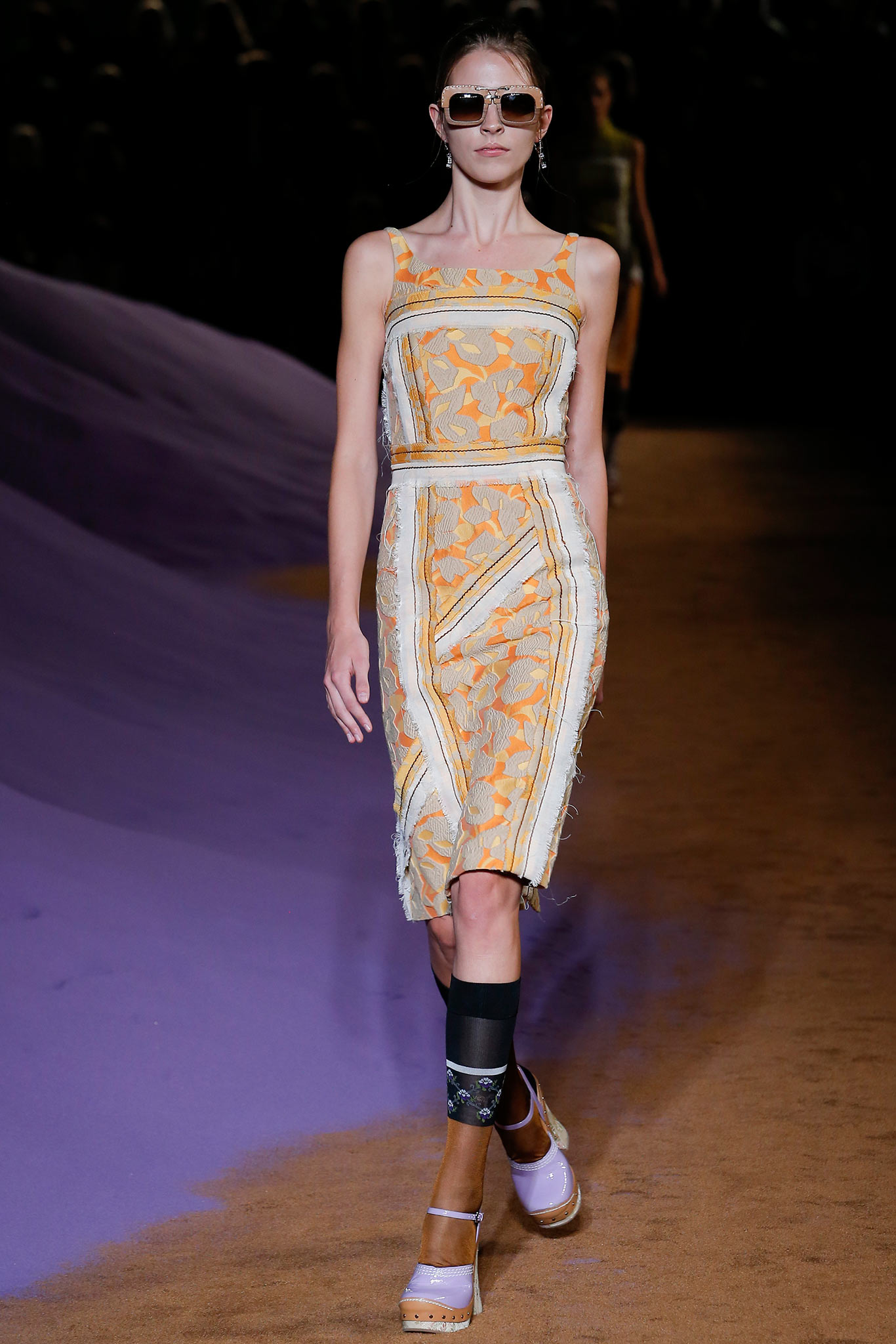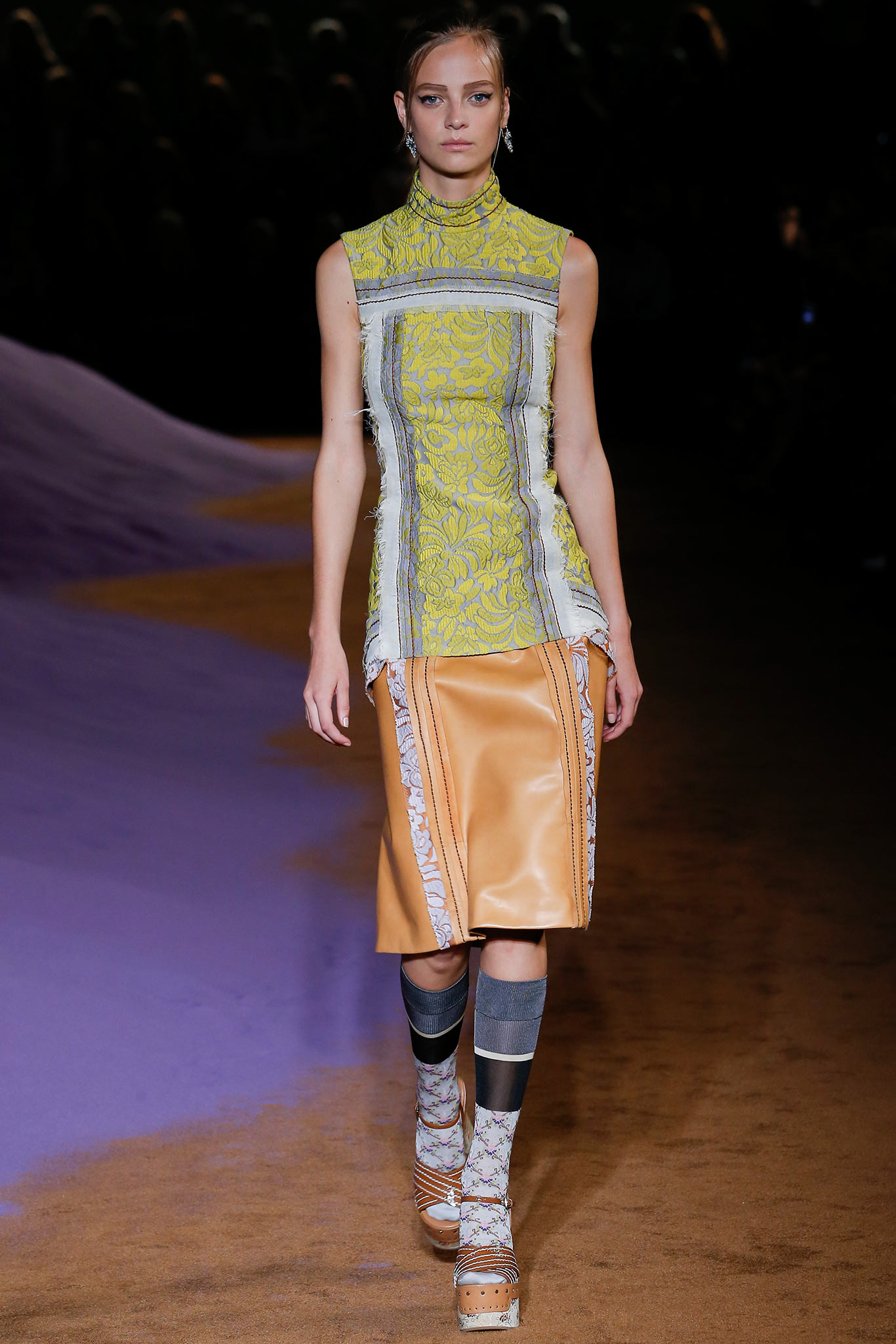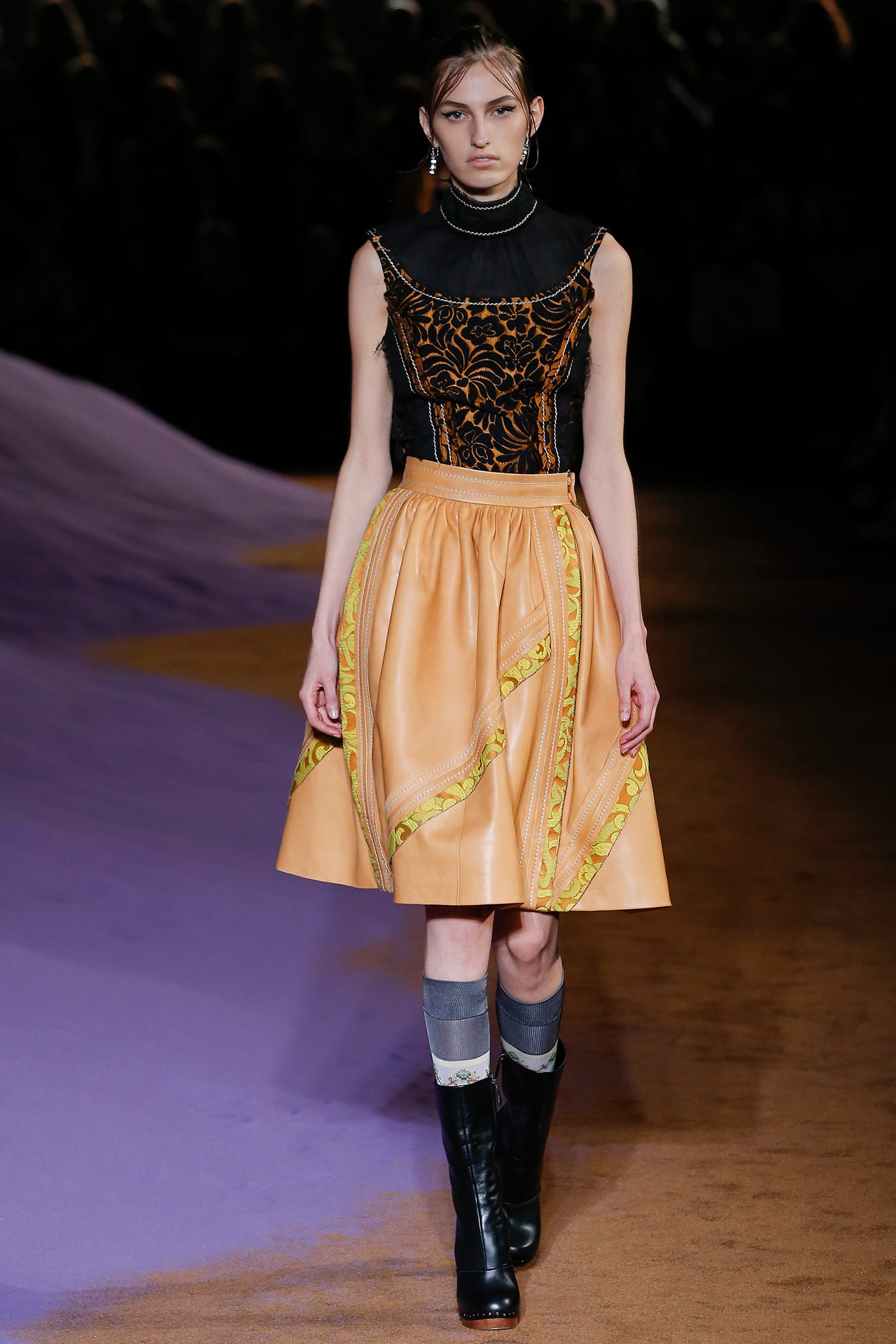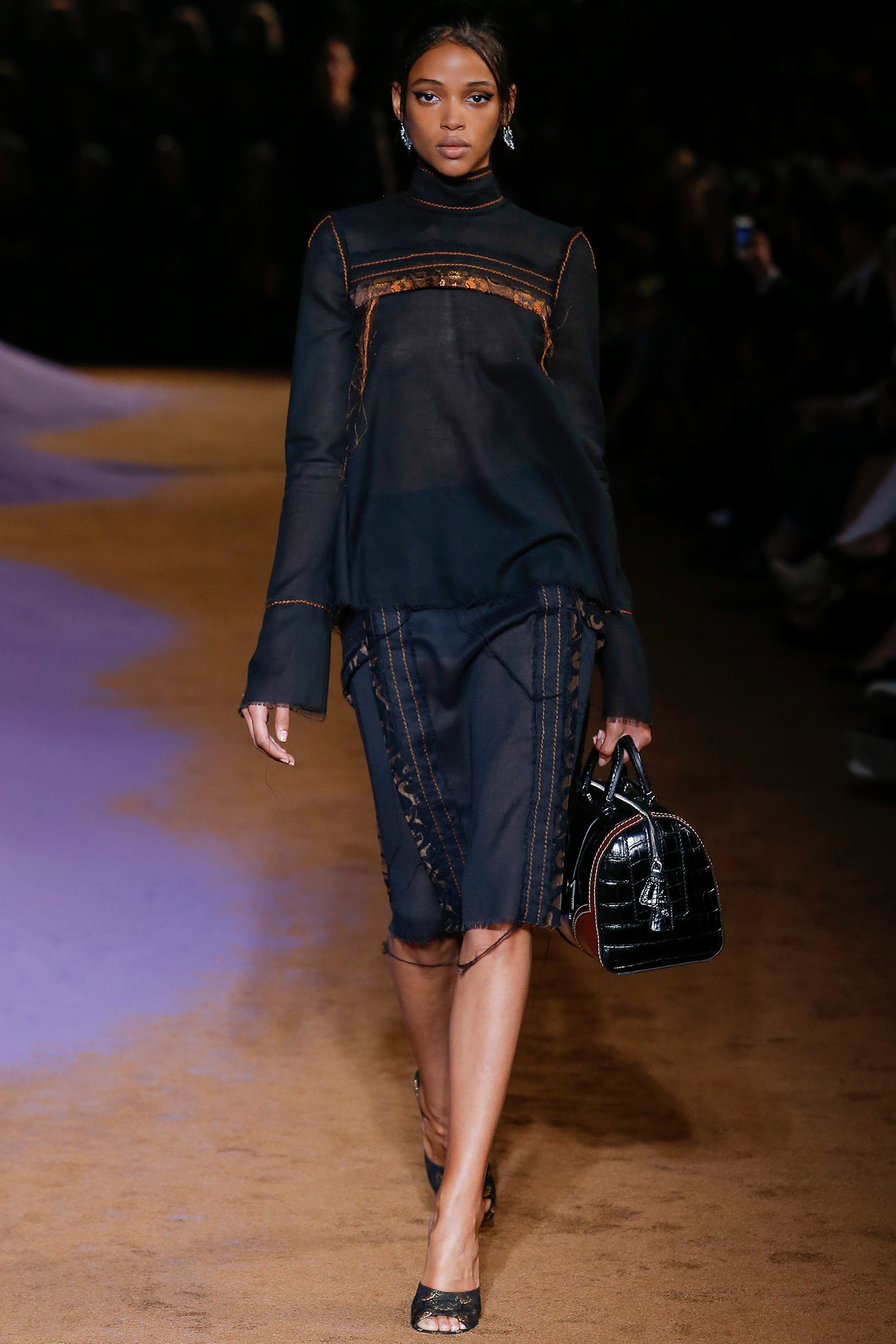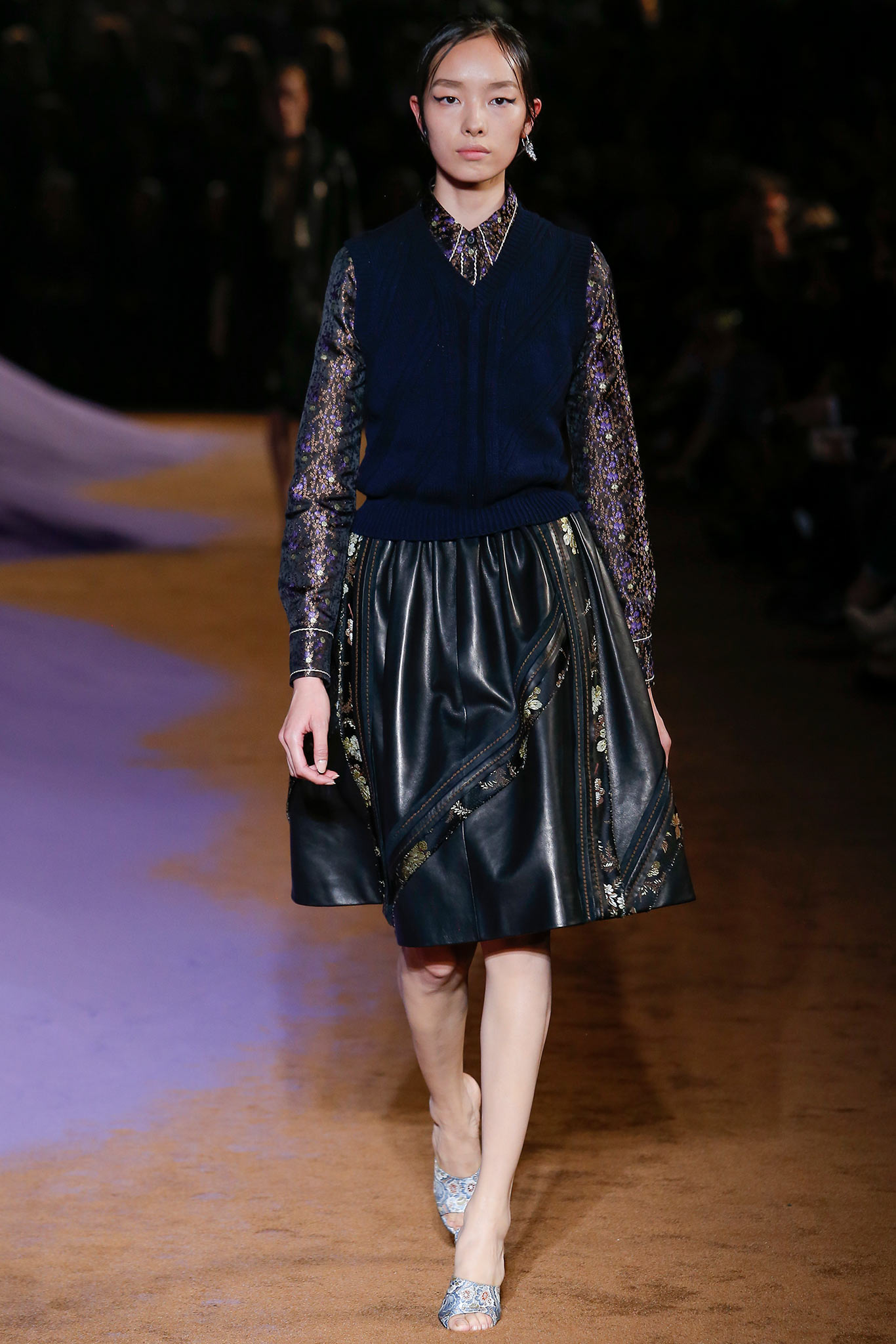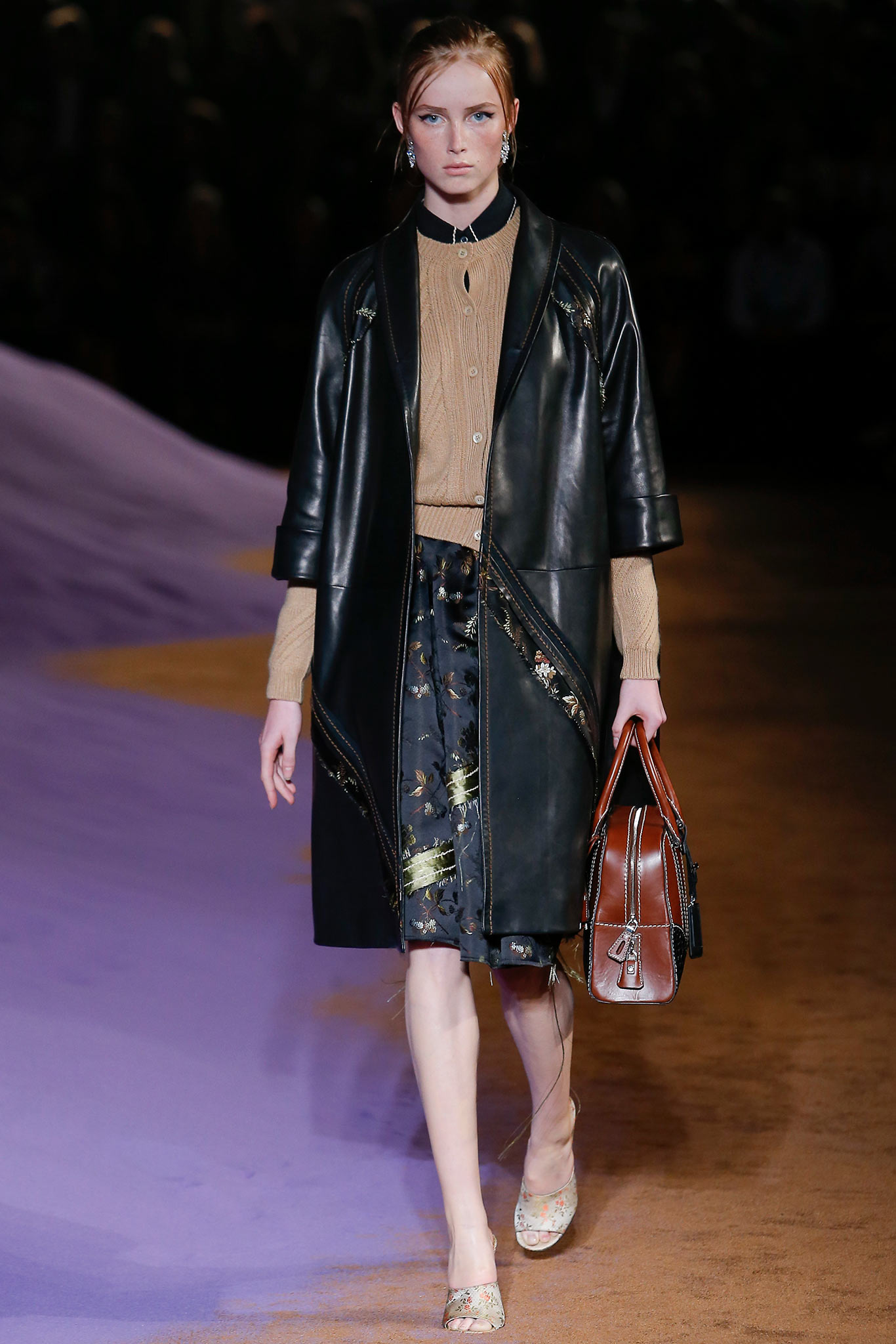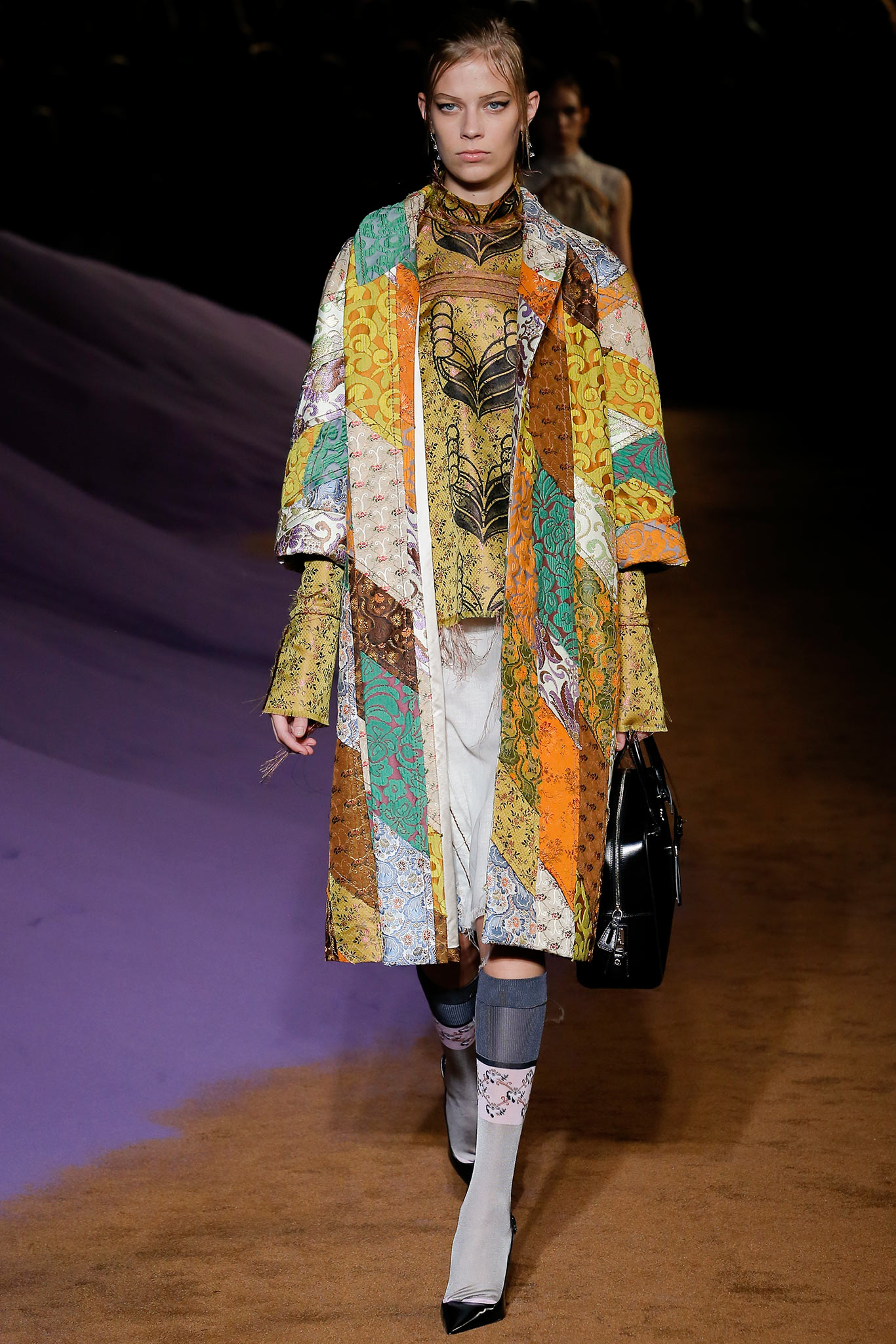
AMO, the company that designs the sets for Prada’s shows, has created some special effects in the past. In June, the show space was transformed into a huge swimming pool as a backdrop for the Spring menswear collection. Today, the women’s turn, the expanse of water had been replaced by eerie dunes made of lilac sand. Limpid water to dry sand—a process suggestive of catastrophe.
There were other clues. The collections shared certain characteristics—a lot of topstitching, a lot of coats—but Miuccia Prada’s menswear show settled for conservatism to the point where it was singled out as emblematic of normcore. And Mrs. P wasn’t going to like that much. So if at first glance her new women’s looks were still bourgeois-proper—A-line coats with three-quarter sleeves, belted coatdresses, shapely skirts to the knee paired with little sweaters, all things she’s done before—that late “normality” had actually been unhinged, perhaps by the disaster that turned water to sand. It’s the kind of willful twist she pulls off better than anyone else.
Imagine a woman escaping into those purple-shaded dunes with the few scraps of her old life she could carry (including her platform clogs), then hanging on to those mementos and mending them lovingly. Clothes were pieced together, seams marked out for sewing, roughly picked out in topstitching, held together by leather and the occasional strip of brocade. Hems trailed threads; stuffing burst from pockets. Clothes that might have been rich in a former life were now beautiful fragments. There was a definite tug between rich and poor, not just in the collaging of gilded fabrics and humbler stuff, but in the way one neckline was threaded with diamonds, another defined by plain dark contrast stitching. (At Prada, even the canapés served before the show act as clues to the essence of each new collection, and here they included a square of chocolate on dry bread, which could pass as a poor man’s candy bar.)
“I wanted to revive the beauty of incredible fabrics,” said Miuccia, but almost in the next breath, she revealed how conflicted her relationship with beauty is. For the umpteenth time, she said beauty was “an impossibility.” And, yet again, she showed how a seductive new kind of dark beauty could be literally pieced together from ingredients as unpromising as scraps of brocade and raw cotton. Maybe that’s what she meant when she talked about “a confrontation with antiquity,” in which the old would be made new. And you could really see the make of these clothes.
And though it might have been a little bit due to Frédéric Sanchez’s extraordinary electric firestorm of a soundtrack—which closed with an ardent exhortation to “kiss me, kiss me, kiss me”—in the end you could really feel their passion, too.










